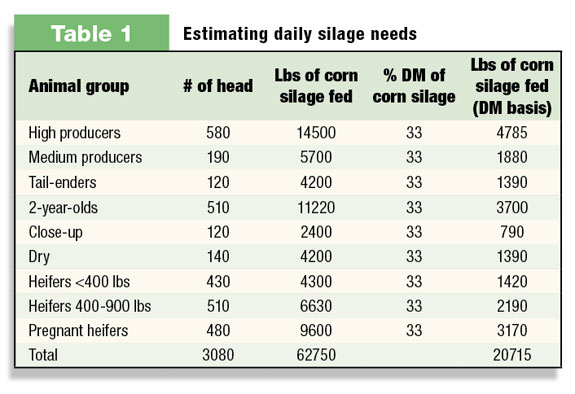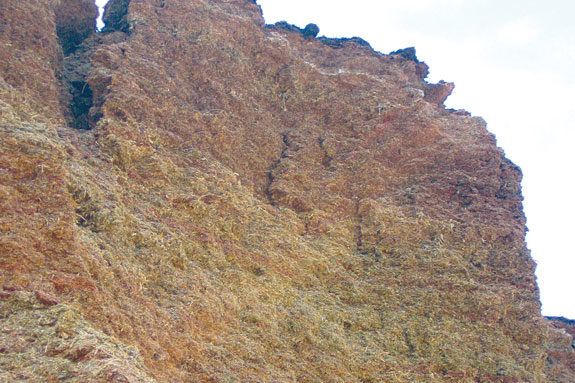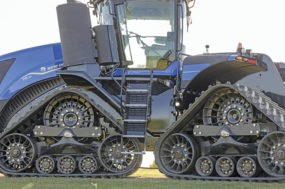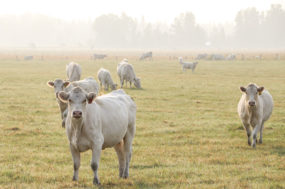Many of these storage structures were designed based on “experience and convenience” rather than needs at the farm and science, often resulting in structures are that too wide and too tall that do not allow for proper forage preservation.
The main benefits of a silage storage structure properly designed are diminishing dry matter losses and preserving nutritive value.
Dry matter (DM) losses are the result of prolonged aerobiosis and improper fermentation, often due to poor packing.
Proper silo design also allows us to improve feedout management, increasing aerobic stability and keeping silage from heating. All of these losses not only lower the amount of DM recovered, but the quality of the resulting silage is also diminished.
What information do you need in order to design a proper silo? Most of the information is already available to us or may be obtained with minimal effort. The information needed includes:
- daily silage needs
- average DM content of the silage
- estimate of ensiling losses
- number of days to feed silage
- silage removal rate
- average density of the silage
Let’s look at each one of them in more detail.
First, let’s estimate daily silage needs. We begin by listing all of the animal groups that we need to feed and the quantity of silage that each group is fed on a daily basis.

From Table 1 we see that 20,715 pounds DM of corn silage will be fed each day.
The next step is to take into account expected DM losses, so that we find how many pounds per day must be ensiled.

After losses are taken into account, 27,990 pounds DM of corn silage must be ensiled (Table 2).
Now, we need to determine how long we want to feed silage.
For this example, we will assume that corn silage needs to last 365 days.

Table 3 shows the total amount of corn silage to be ensiled the year.
The next step would be to determine the desired removal rate per day from the face of the silo. This value often falls between 0.5 and 1.5 feet per day.
The low end of the range should be used during cooler weather, while the upper end of the range must be used during the hot summer months. For our purposes, we will use a daily removal rate of 1.5 feet.
The last step in gathering information is to determine silage density. Silage density may be determined at the field level using a silage probe or using the spreadsheet developed by Dr. B. Holmes and co-workers from the University of Wisconsin.
A desirable goal is a density of 16 pounds DM per cubic foot (unfortunately, a large proportion of silage densities in the U.S. fall below 15 pounds DM per cubic foot).
A summary of the information gathered follows:
- daily silage needs: 20,715 pounds DM
- average DM content of the silage: 33 percent
- estimate of ensiling losses: 26 percent
- number of days to feed silage: 365
- silage removal rate: 1.5 foot per day
- average density of the silage: 16 pounds DM per cubic foot
Now we can start calculating the dimensions of our silo. If we need to store 10,216,350 pounds DM per year at a density of 16 pounds DM per cubic foot, then we must have 638,522 cubic feet of storage.
We already know the length of the silo (since we are removing 1.5 feet per day, we will assume for the time being that the length is 548 feet).
Maximum height of the silo is determined by the equipment we have available to remove the silage. It is suggested that under no situation should height exceed 20 feet to avoid silage avalanches, improve worker safety and packing.
For our example, we will use a height of 17 feet. To determine the width of the silo, we use the following formula:
total cubic feet needed of storage/(removal rate feet * height feet) = feet in width
In our example:
638,522 cubic feet of storage/ (548 feet * 17 feet) = 69 feet in width
So, the dimensions of our silo would be 17 feet high, 548 feet long and 69 feet wide.
But are these dimensions right? Do you have enough space to fit a silo of this size? As a general rule, it would be better to have shorter silos.
For example, two silos measuring 17 feet high, 274 feet long and 69 feet wide would be better than the silo above. Even better would be to have 3 silos measuring 17 feet wide, 183 feet long and 69 feet wide.
Smaller silos lend themselves to increased flexibility at the farm: you can segregate fields that may have an agronomical or harvest (wind damage, hail, early frost, etc.) issue or corn hybrids (such as BMR hybrids), and you can close and seal a silo quicker, diminishing aerobiosis and exposure to oxygen.
If you were building concrete bunker silos, having the three smaller silos will result in savings on having less concrete to pour, as the two central walls are shared among the three silos.
A word about the walls on the side: we must have sloped walls, giving the silo a trapezoidal face. There are two primary reasons: compaction and wall stability.
The slope of the walls should be around 1/8 of the height of the wall (1/16 in at the bottom of the silo and 1/16 out at the top of the silo).
Final consideration needs to be given to the dome of the silo. The height of the dome needs to be less than 1/8 of the widest part of the silo.
It is difficult to compact domes higher than the suggested height, resulting in unsafe silage faces and a likely cause of avalanches.
In summary, the main benefits of a silage storage structure properly designed are diminishing dry matter losses and preserving nutritive value. Improved packing will result in a reduction in aerobiosis and improved fermentation.
The proper silo design and size helps us during feedout and keeps the silage from heating. The overall result is that we get to feed more silage of a better quality. FG
PHOTO
The height of the dome needs to be less than 1/8 of the widest part of the silo. It is difficult to compact domes higher, resulting in unsafe silage faces and a likely cause of avalanches. Photo courtesy of Luis C. Solórzano.










